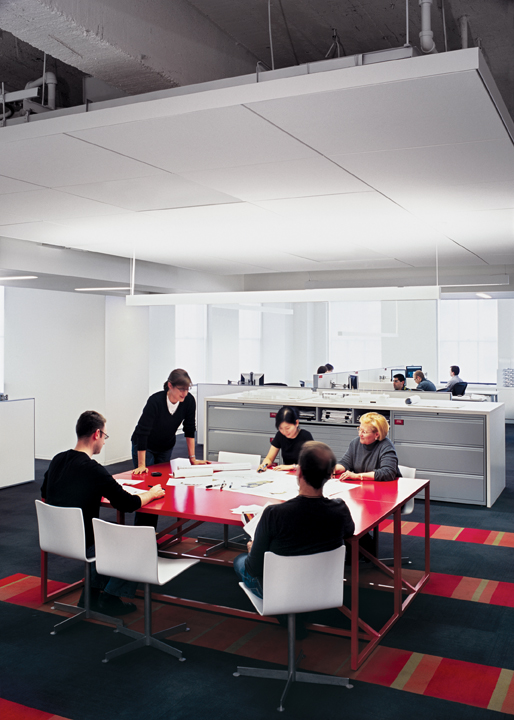While Gensler may be the largest architecture firm in the U.S. by revenue ($657 million in 2010, according to BD+C's Giants 300 rankings), the firm doesn't let its size get in the way of its relationship with each of its more than 3,000 employees in 40 offices globally-or, for that matter, its relationship with its clients around the world.
Just the opposite. Gensler leverages its resources to create career development programs that few design firms could hope to duplicate. More than 300 volunteer "learning coordinators" oversee extensive technical and leadership training in such topics as Revit, construction administration, and "TechKnow," a series that highlights new technology developments in the AEC field. The firm even employs a full-time "instructional designer" to make sure its training programs provide real ROI.
All this is part of Gensler's Talent Development Studio, which it describes as "a human capital think tank that advances and aligns the company's greatest asset-its people-with the organization's business goals." The Talent Development program has been a key factor in the firm's remarkable growth since 2003 (and, remarkably, even in the last few years of economic recession), in both revenue and new employees.
BEST AEC FIRMS TO WORK FOR 2011 WINNERS
Chapman Construction/Design
EYP Architecture & Engineering
Gensler
HMC Architects
MHTN Architects
Look for a more extensive report on Gensler in the January 2012 issue of BD+C.
Related Stories
| Aug 11, 2010
Great Solutions: Healthcare
11. Operating Room-Integrated MRI will Help Neurosurgeons Get it Right the First Time A major limitation of traditional brain cancer surgery is the lack of scanning capability in the operating room. Neurosurgeons do their best to visually identify and remove the cancerous tissue, but only an MRI scan will confirm if the operation was a complete success or not.
| Aug 11, 2010
Great Solutions: Collaboration
9. HOK Takes Videoconferencing to A New Level with its Advanced Collaboration Rooms To help foster collaboration among its 2,212 employees while cutting travel time, expenses, and carbon emissions traveling between its 24 office locations, HOK is fitting out its major offices with prototype videoconferencing rooms that are like no other in the U.
| Aug 11, 2010
2009 Judging Panel
A Matthew H. Johnson, PE Associate Principal Simpson Gumpertz & HegerWaltham, Mass. B K. Nam Shiu, SE, PEVP Walker Restoration Consultants Elgin, Ill. C David P. Callan, PE, CEM, LEED APSVPEnvironmental Systems DesignChicago D Ken Osmun, PA, DBIA, LEED AP Group President, ConstructionWight & Company Darien, Ill.
| Aug 11, 2010
Inspiring Offices: Office Design That Drives Creativity
Office design has always been linked to productivity—how many workers can be reasonably squeezed into a given space—but why isn’t it more frequently linked to creativity? “In general, I don’t think enough people link the design of space to business outcome,” says Janice Linster, partner with the Minneapolis design firm Studio Hive.
| Aug 11, 2010
BIM school, green school: California's newest high-performance school
Nestled deep in the Napa Valley, the city of American Canyon is one of a number of new communities in Northern California that have experienced tremendous growth in the last five years. Located 42 miles northeast of San Francisco, American Canyon had a population of just over 9,000 in 2000; by 2008, that figure stood at 15,276, with 28% of the population under age 18.







